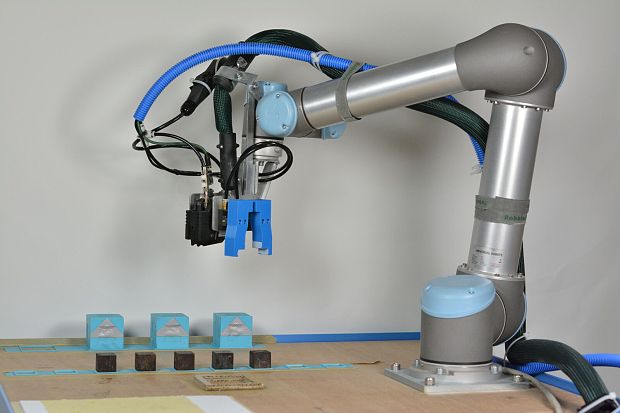-
Tips for becoming a good boxer - November 6, 2020
-
7 expert tips for making your hens night a memorable one - November 6, 2020
-
5 reasons to host your Christmas party on a cruise boat - November 6, 2020
-
What to do when you’re charged with a crime - November 6, 2020
-
Should you get one or multiple dogs? Here’s all you need to know - November 3, 2020
-
A Guide: How to Build Your Very Own Magic Mirror - February 14, 2019
-
Our Top Inspirational Baseball Stars - November 24, 2018
-
Five Tech Tools That Will Help You Turn Your Blog into a Business - November 24, 2018
-
How to Indulge on Vacation without Expanding Your Waist - November 9, 2018
-
5 Strategies for Businesses to Appeal to Today’s Increasingly Mobile-Crazed Customers - November 9, 2018
Cambridge scientists develop robots which can evolve
Equipped with a Universal Robots UR5 robotic arm and gripper, the mother robot built and tested ten generations of “cube babies” in five experiments.
Advertisement
In five separate experiments the mother-bot was allowed to continue building her children until 10 generations had been created, each time using the “fittest” bot to inform the design of the next child. Each of the robot’s genomes consisted of up to five different “genes”, containing all the information about the physical properties and computational abilities of that robot.
This video is not supported by your browser at this time.
The genetic “fitness” of each design was tested on the basis of how far the “kids” could travel across a table in a given amount of time.
The results, reported in the journal PLOS One, found preferential traits were passed down through generations, so the “fittest” individuals in the last generation performed as quickly as the fittest individuals in the first. The most successful individuals remained unchanged from generation to generation, while the least successful were subjected to mutations and gene crossovers.
The feedback from each stage of the experiment not only resulted in the fine tuning of robot children across generations, but also caused the mother robot to be able to invent new shapes and movement patterns, including some that a human designer would not have been able to build.
“We think of robots as performing repetitive tasks, and they’re typically designed for mass production instead of mass customisation, but we want to see robots that are capable of innovation and creativity”.
This is all done without human intervention. Most work in this field is done using computer simulation.
Luzius Brodbeck, one of the researchers from the Institute of Robotics and Intelligent Systems at ETH Zurich, said the robots are normally programmed to do one just thing.
This type of research is usually done virtually, with an artificial intelligence evaluating thousands or millions of possibilities in a computer simulation.
Future work may combine simulation and real-life testing, increase the complexity of the child robots, or use nature-inspired techniques to improve the efficiency of their gaits.
Engineers have developed a robotic system that can evolve and improve its performance.
Our science correspondent Pallab Ghosh has been to the robot lab to take a look for himself. One of his group’s developments, the “Chairless Chair”, is a wearable device that allows users to lock their knee joints and “sit” anywhere, without the need for a chair.
Advertisement
Everyone who thinks robots are going to take over the world might be about to get a lot more frightened: Scientists have created a machine that’s able to have babies.




























